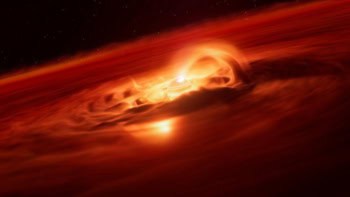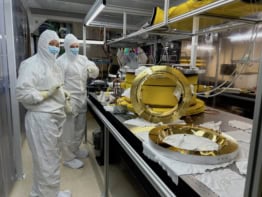Astronomers have discovered the first planetary system around a star other than the Solar System around our Sun. Paul Butler of the Anglo-Australian Observatory and a team of US astronomers have discovered three large Jupiter-size planets orbiting the star Upsilon Andromedae, which is 44 light years away from the Earth. The results have big implications for theories of planetary formation. Previously astronomers thought that Jupiter-sized planets could only form on the outskirts of planetary systems, but two of the planets orbit Upsilon Andromedae at less than the Earth-Sun distance.
Upsilon Andromedae is a yellow G-type star similar to the Sun. In 1996 Geoffrey Marcy from San Francisco State University, together with Butler, discovered one planet by observing a ‘wobble’ in the star’s rotational velocity. This planet is about three-quarters the mass of Jupiter and orbits the star every 4.6 days. However, an unusual scattering pattern in their observations led them to think that other planets may also be affecting the star’s velocity.
These conclusions were recently confirmed by new data gathered on the rotational velocity. They believe that two extra planets now exist around the star – a middle planet, twice the size of Jupiter, orbiting Upsilon Andromedae at roughly the Sun-Venus distance, and an outermost planet, four times Jupiter’s mass circling the star in an elliptical orbit, two and a half times the Earth-Sun distance.
But the origin of the planets is still not clear. “I am mystified at how such a system of Jupiter-like planets might have been created, ” says Marcy.
This work was confirmed independently by astronomers from the Harvard-Smithsonian Center for Astrophysics (CfA) in Cambridge, MA, and from the High Altitude Observatory (HAO) in Boulder, Colorado.
“Both of our groups found essentially the same size and shape for the orbits of the companions, ” said Sylvain Korzennik Harvard-Smithsonian CfA. “The chances of this happening by accident are infinitesimal.”
The research may also have implications on the question of whether there is life outside the solar system.
“It implies that planets can form more easily than we ever imagined, and that our Milky Way is teeming with planetary systems, ” says Derba Fischer from San Francisco State University.
The work is to be published in the Astrophysical Journal.



